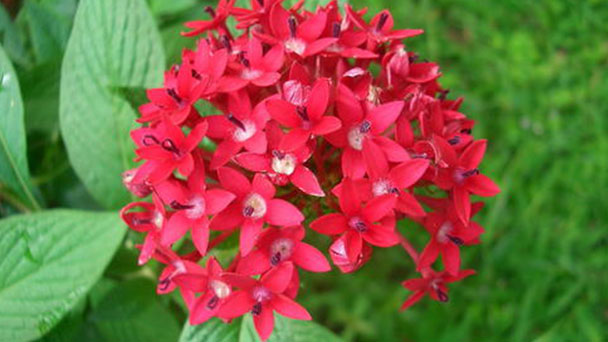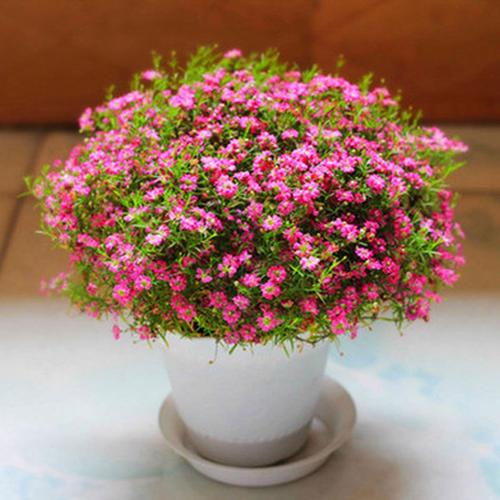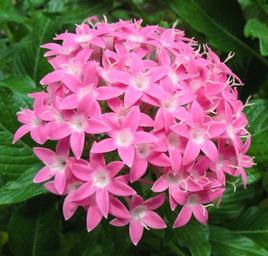Pentas Lanceolata Propagation Methods
Written by Maggie
Oct 22 2021

How to propagate Pentas Lanceolata (Egyptian starcluster)? Pentas Lanceolata generally propagates through seed sowing, and cutting propagation. The operation process is not very complicated. The following is a complete seed sowing and cutting propagation of Pentas Lanceolata.

Pentas Lanceolata Propagation from Seed
1. Preparation before seed propagation
The seeds of Pentas Lanceolata (Egyptian starcluster) should be prepared first. In addition, a hole tray should be prepared as a seedling raising facility.
Generally, the soil for sowing is rich in humus, with good drainage and sterile soil, and the clay content in the soil is 10%-20%. Materials such as coconut fiber and perlite can be appropriately added into the soil.
2. Steps of seed propagation
First, seed pentas Lanceolata was seeded on the disc. Remember to plant one seed per hole. The hole size should be 1.5 -- 2 cm.
Generally, seeds of pentas lanceolata will germinate about 10 -- 14 days after sowing, with the germination temperature controlled at 23℃ -- 26℃, and the relative humidity in the air should be kept at 100%, until the leaves of Pentas Lanceolata grow out.
Pentas Lanceolata seeds should be fully hydrated during germination. In addition, the dissolution of the outer layer of the quick powder flower can be added to promote germination.
The seeds of Pentas Lanceolata can be transplanted into pots 7 to 9 weeks after sowing. The diameter of the pots should be 10 to 15 cm. Sterile peat soil with a little fertilizer and good drainage should be selected as the cultivation substrate, with a PH value of 6.5-6.8.
3. Precautions for seed propagation
Pentas Lanceolata seeds are sown with a fully balanced fertilizer of one to one kilogram per cubic meter and a slow release fertilizer of one kilogram per cubic meter in the matrix to keep the soil fertile for sowing and, in short, to provide the seeds with sufficient nutrients.
Relative humidity should be reduced to 50% during the growth stage of cave-disc seedlings to prevent leaf diseases.
During germination, if the illumination is kept stable at 1000 lux, the new buds will grow more orderly and of higher quality, and the illumination after germination will be maintained at 10000-25000 lux. As the seedlings grow, the illumination must increase to 50,000 lux and the temperature must be controlled.
Let the seedlings receive sunlight as soon as possible after germination to avoid the phenomenon of vain growth and promote the rapid growth of the plants.

Pentas Lanceolata Propagation from Cutting
Pentas Lanceolata Propagation Time
The propagation of Pentas Lanceolata (Egyptian starcluster) is mainly based on cutting propagation. Generally, it can be carried out all the year-round, but spring and autumn are the best time for cutting propagation. Generally in the autumn, combined with pruning cuttings, the original plant can also do the renewal of the branches.
Pentas Lanceolata Cuttings
When cutting Pentas Lanceolata (Egyptian starcluster), suitable cuttings should be selected. It is better to have strong, intersegmental branches with terminal shoots.
When cutting, select branches with terminal buds and 3-5 internodes with a length of 5-10cm. After cutting, cut off the Pentas flowers and buds, and remove the lower leaves.
Pentas Lanceolata Cutting propagation
Make a hole in the bottom of a clear plastic cup, then put the blue stone on the bottom and add water. Put the prepared cuttings into the cup for aquatic root induction.
Be careful that the water level is not too high during root luring.
Rooting normally takes about 1 to 2 weeks. Once the roots have grown, transplant them into a small pot and place them in a well-lit area. After the roots have grown more complete, the planting is carried out.

Latest Updated
- Benefits of Bugleweed - 7 Science-backed Health Benefits
- Bugleweed Dangers & Side Effects - Is It Poisonous?
- How to Plant Evergreen Trees - What You Should Know
- When to Plant Evergreens - Grow Guide for Evergreen Trees
- 12 Wonderful Evergreen Shrubs for Your Garden
- 12 Popular Evergreen Plants with Pictures for Beginners
- When And How To Prune A Lilac Bush Like a Pro
- How to Grow & Care for Lilac Vine (Hardenbergia Violacea)
- Japanese Lilac Tree (Syringa Reticulata) Care & Propagation Guide
- Shumard Oak Pros and Cons - What to Know
Popular Articles
- Winter maintenance of Antirrhinum Majus
- How to Grow Terminalia Mantaly Tree
- How to Grow and Care for Crossostephium Chinense
- How to grow Antirrhinum Majus in spring
- Peristeria Elata (Dove Orchid) Profile: Info & Care Guide
- Underwatered Snake Plant (Sansevieria Trifasciata) - Signs And How To Fix
- How to Care for Brazilian Jasmine Plant (Mandevilla Sanderi)
- How to Grow & Care for Graptopetalum Purple Delight in Summer
- Rosa Chinensis (China Rose): Plant Growing & Care Tips
- How to Care for Baby Sun Rose (Aptenia Cordifolia)